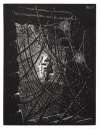Henri
De Toulouse Lautrec
Henri de Toulouse-Lautrec captured the vibrant spirit of 19th-century Parisian nightlife through his evocative posters and intimate paintings. If you’re looking for original Toulouse-Lautrec prints and editions for sale or would like to sell, request a complimentary valuation and browse our network’s most in-demand works.
Henri De Toulouse Lautrec art for sale
Discover Henri De Toulouse Lautrec prints for sale, exclusively available through our private network of collectors. Explore signed and unsigned screenprints, lithographs, digital prints, and rare editioned proof prints by era-defining blue chip artists.
Sell Your Art
with Us
with Us
Join Our Network of Collectors. Buy, Sell and Track Demand
Biography
Born into an aristocratic family in 1864, Henri Marie Raymond de Toulouse-Lautrec-Monfa exhibited a talent and passion for art from an early age. Despite his noble lineage, Toulouse-Lautrec's life was marked by adversity owing to congenital health conditions that stunted his growth and left him with physical challenges. This, however, did not deter his artistic pursuits. He moved to Paris, where he studied under academic painters Léon Bonnat and Fernand Cormon, who introduced him to the vibrant artistic community that would greatly influence his work.
Toulouse-Lautrec's development was characterised by his immersion in the nightlife of Paris, where he found inspiration in the city's cabarets, dance halls, and bordellos. His work during this period was notable for its bold use of colour, expressive lines, and the ability to capture the movement and energy of the city's eclectic characters. Works such as At The Moulin Rouge and Jane Avril attest to his mastery in portraying the lively scenes and personalities that frequented these nocturnal haunts.Born into an aristocratic family in 1864, Henri Marie Raymond de Toulouse-Lautrec-Monfa exhibited a talent and passion for art from an early age. Despite his noble lineage, Toulouse-Lautrec's life was marked by adversity owing to congenital health conditions that stunted his growth and left him with physical challenges. This, however, did not deter his artistic pursuits. He moved to Paris, where he studied under academic painters Léon Bonnat and Fernand Cormon, who introduced him to the vibrant artistic community that would greatly influence his work.
Toulouse-Lautrec's development was characterised by his immersion in the nightlife of Paris, where he found inspiration in the city's cabarets, dance halls, and bordellos. His work during this period was notable for its bold use of colour, expressive lines, and the ability to capture the movement and energy of the city's eclectic characters. Works such as At The Moulin Rouge and Jane Avril attest to his mastery in portraying the lively scenes and personalities that frequented these nocturnal haunts.
His style, influenced by Impressionism and Japanese printmaking, evolved to reflect the dynamics of Parisian society with a distinctively graphic approach, making Toulouse-Lautrec a precursor to the modern poster movement. His posters revolutionised the world of advertising and remain iconic images of the period.
Throughout his career, Toulouse-Lautrec's work was exhibited in various Parisian galleries, and despite his relatively short life, he produced an impressive body of work that included over thousands of paintings, drawings, and posters. His health, exacerbated by alcoholism and syphilis, deteriorated, and he died at the age of 36.
Toulouse-Lautrec's legacy is profound, with his depictions of Parisian life continuing to intrigue and inspire. His innovative techniques in lithography and his bold, yet sensitive portrayals of society's fringe have rendered him a seminal figure in the transition from the 19th to the 20th century in art. His work not only captures the essence of an era but also serves as a timeless testament to the power of art in documenting the human experience.


























